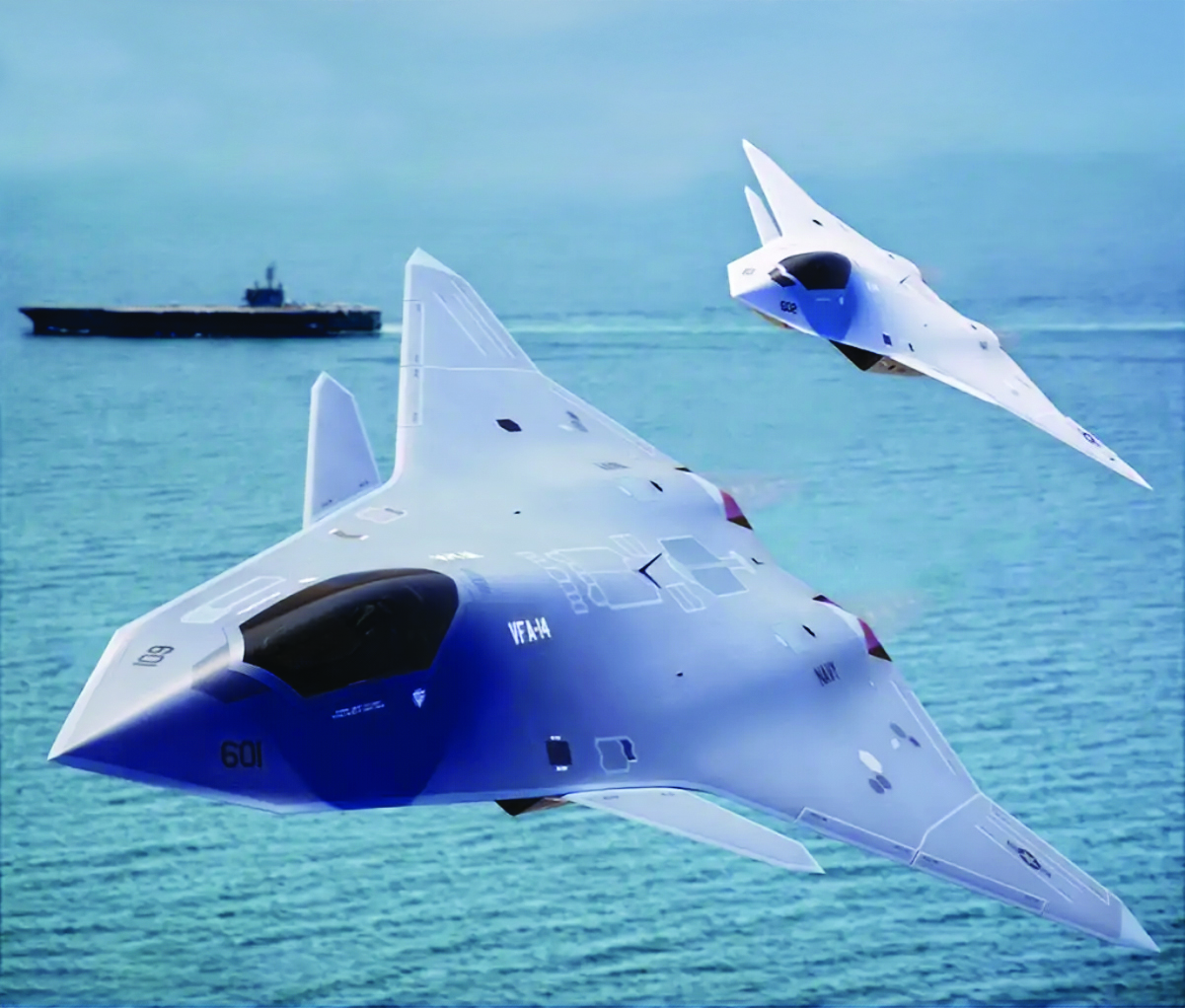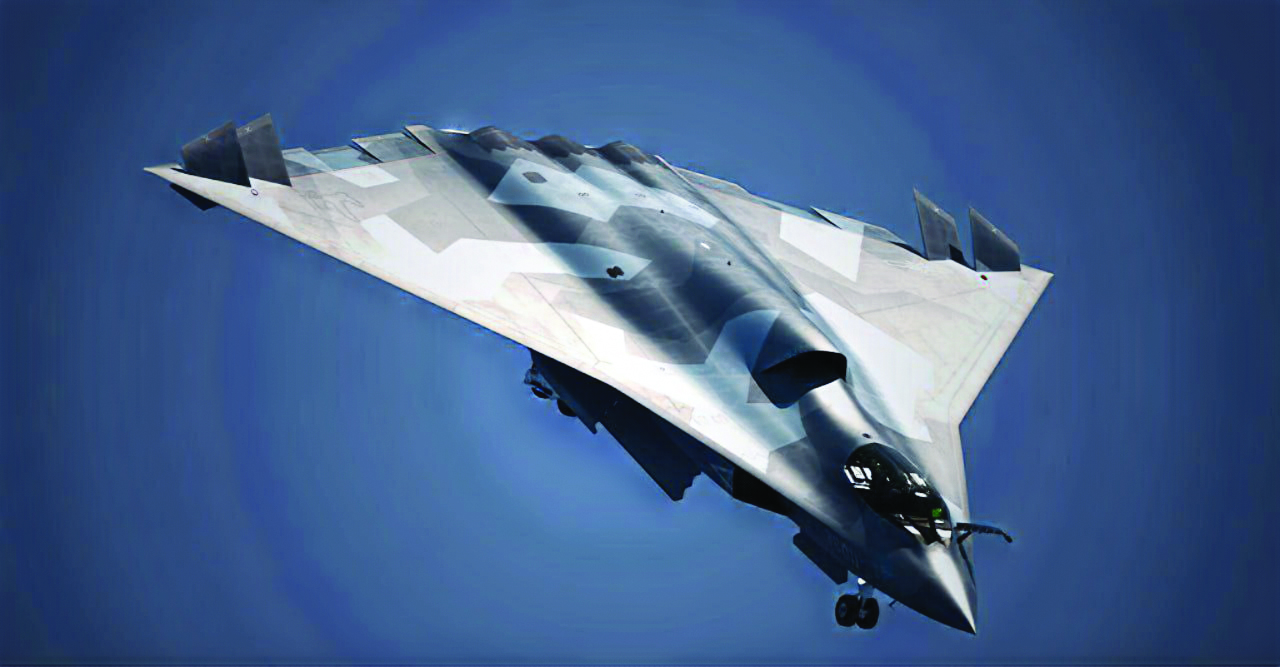In an era where air superiority plays a pivotal role in determining the outcome of major conflicts, the rapid evolution of fighter jet technology has become a defining feature of global military competition. The race to dominate the skies has intensified, with international powers investing heavily in cutting-edge platforms that can tip the balance of power on modern battlefields. At the heart of this race is the development of sixth-generation fighter jets—aircraft envisioned as game-changers in future warfare.

This technological momentum was underscored in March 2025, when U.S. President Donald Trump announced the resumption of the “Next Generation Air Dominance” (NGAD) programme, aimed at advancing American sixth-generation fighter capabilities. This coincided with reports of significant progress in China’s own sixth-generation development, fuelling speculation about the features, comparative advantages, and strategic implications of this emerging class of aircraft.
Defining the Sixth Generation: A Leap Beyond the Fifth
The history of fighter jet development reflects a constant pursuit of superiority, driven by shifting military doctrines and evolving threats. Aircraft are generally classified into successive generations based on technological advancements:
• First Generation: Emerging in the aftermath of World War II, these early jets, such as Germany’s Messerschmitt 262, replaced piston engines with jet propulsion.
• Second Generation (1950s): Introduced air-to-air missiles, moving beyond machine guns.
• Third Generation (1960s): Featured variable-geometry wings and supersonic capabilities.
• Fourth Generation (mid-1970s): Brought multi-role functions, high manoeuvrability, and fly-by-wire control systems.
• Fifth Generation (1990s–present): Integrated stealth, supercruise, advanced avionics, and multi-role functionality.
Building on these developments, sixth-generation fighter jets are expected to dramatically exceed the capabilities of their predecessors. These platforms aim not only to inherit the core strengths of fifth-generation jets—stealth, speed, and agility—but also to enhance and expand them through revolutionary technologies. Key characteristics include:
1. Enhanced autonomous capabilities: Sixth-generation aircraft are expected to exhibit significantly increased autonomy, allowing them to execute complex missions with minimal human intervention. This reduces pilot risk while enhancing operational efficiency, particularly in high-threat environments.
2. Commanding Unmanned Swarms: A key feature will be their capacity to command swarms of autonomous unmanned aerial vehicles (UAVs). In network-centric warfare scenarios, these fighter jets will function as command hubs, directing fleets of drones to execute precision strikes, conduct surveillance, or disrupt enemy defences. This swarm-based model introduces a new layer of complexity for adversaries, particularly in air defence.
3. Seamless Integration in Network-Centric Warfare: The definition of a next-generation fighter jet is closely tied to the evolving operational context in which it is deployed. For instance, fourth- and fifth-generation aircraft were designed with different priorities in mind. Fourth-generation fighters emphasised high manoeuvrability and the capability to conduct long-range strikes. In contrast, fifth-generation jets were engineered with stealth as a central feature, enabling them to penetrate advanced integrated air defence systems and neutralise targets with minimal detection. Unlike previous generations designed for specific tactical tasks, sixth-generation fighters are conceptualised as nodes within a larger operational network. While fifth-generation aircraft incorporated network features, the new generation is built from the ground up for data-centric warfare. These jets will be embedded in expansive digital ecosystems, integrating with satellites, UAVs, ground-based sensors, and cyber assets. This real-time data fusion will enable faster decision-making, enhanced threat recognition, and coordinated strikes, ushering in an era of unprecedented combat integration.
4. Advanced Use of Artificial Intelligence: AI will be a cornerstone of sixth-generation capabilities. From sensor data processing and threat assessment to navigation and weapons management, AI will support or even autonomously execute functions traditionally performed by pilots. Moreover, onboard ”smart” weapons will communicate with each other mid-flight, adapting in real time to changing battlefield conditions. This will empower pilots to focus on strategy while AI handles tactical execution.
Strategic Competition in Sixth-Generation Fighter Development
There is a fierce competition between the United States and China to field the first operational sixth-generation fighter. The United States is currently developing the F-47, intended to succeed the F-22 Raptor. The F-47 is expected to feature a high-performance, long-range airframe with enhanced stealth characteristics, cutting-edge sensor arrays, and advanced electronic warfare capabilities. However, the cost of development is staggering, with estimates reaching $20 billion for the programme and $300 million per aircraft. Amid these rising costs, the Biden administration suspended the Next Generation Air Dominance (NGAD) programme in mid-2024. Yet, strategic imperatives in the Indo-Pacific region prompted the Trump administration to reverse course, awarding Boeing a production and development contract for the NGAD programme in March 2025, despite broader efforts to reduce defence spending.
However, NGAD extends beyond a single manned fighter aircraft. The initiative also encompasses unmanned Collaborative Combat Aircraft (CCA), next-generation jet engines, sensors, and electronic warfare systems. Early design renderings of the F-47 reveal a sleek, tailless airframe with a supersonic flying wing structure optimised for all-angle stealth, along with a flat nose and lift-generating fuselage. The aircraft is designed to operate in tandem with unmanned systems. However, analysts have raised concerns about the inclusion of forward canards and the lack of traditional vertical stabilisers, which may compromise stealth. Despite a larger frame, the F-47 remains a tactical aircraft rather than a multi-role platform, and critics question Boeing’s capability to lead such an advanced project, given its limited experience in recent fighter programmes.
China’s Accelerated Progress
While the U.S. effort remains in the early stages, China appears to be further along in its sixth-generation fighter development. On 26 December 2024, two new stealth aircraft were observed during flight tests—one large aircraft reportedly named the J-36, sighted over Chengdu, and a smaller design, dubbed the J-50, seen over Xi’an. The J-36 reportedly measures 23 metres in length with a wingspan of 19 metres and an expansive wing area of around 200 square metres.
Both designs lack vertical stabilisers and feature blended wing-body configurations—hallmarks of sixth-generation stealth. Notably, the J-36 appears to employ an unconventional three-engine setup with three air intakes and visible exhaust outlets, suggesting capabilities for high-speed flight, deep penetration missions, and advanced stealth. The aircraft also reportedly features a large 7.6-metre central weapons bay and additional side bays, supporting its role as a heavy strike platform.
Reports suggest that China’s sixth-generation aircraft surpass current U.S. and Russian technologies by integrating artificial intelligence, hypersonic capability, and more advanced weapons systems. With onboard power generation capacity estimated at 1 megawatt, these aircraft are capable of supporting high-powered radar and electronic warfare systems. A fully networked combat system is expected to provide a game-changing force multiplier in any potential conflict in the Indo-Pacific theatre.
American analysts have acknowledged the strategic implications of China’s progress. For the first time since the end of World War II, a peer competitor appears to be developing fighter technologies that could outpace those of the United States. Given the central role of air superiority in U.S. military doctrine, such a development may significantly shift the global balance of power.

Operational Implications and Projected Timelines
China’s sixth-generation fighters reportedly offer a combat range exceeding 2,500 kilometres (over 1,500 miles), potentially enabling strikes on U.S. military bases as far afield as Guam, Diego Garcia, and even Alaska. Based on historical development cycles for China’s fourth- and fifth-generation aircraft, analysts estimate that the J-36 and J-50 could enter service by 2031.
In contrast, U.S. development timelines suggest that the F-47 may not be operational until the late 2030s. Both the F-22 and F-35 programmes required approximately 12 years from prototype to deployment, indicating a similar horizon for the sixth-generation effort. Chinese designers have also challenged the prevailing U.S. preference for smaller fighters, arguing that limited internal volume constrains fuel storage and power generation—critical for sustaining long-range missions and powering advanced electronic systems. The larger size of the J-36 and J-50 reflects a strategic focus on maximising internal capacity for next-generation avionics and directed-energy weapons.
A Broader Global Landscape
Beyond the U.S. and China, several other countries are investing in sixth-generation capabilities. France, Germany, and Spain are jointly developing the Future Combat Air System (FCAS), while the United Kingdom, Japan, and Italy have launched the Global Combat Air Programme (GCAP). Russia has also announced plans for a sixth-generation fighter, though it is not expected to reach operational status before 2050.
The Quest for Air Superiority
Over recent years, debates within military circles have questioned whether the era of uncontested air superiority is drawing to a close. This shift in thinking prompted the U.S. Air Force to explore alternative strategies, including a stronger emphasis on long-range strike capabilities such as the B-21 Raider stealth bomber. Simultaneously, efforts have been made to develop low-cost, miniature aircraft to function as aerial command hubs for unmanned systems.
Yet, current global dynamics underscore the continued centrality of air superiority in warfare. In any future conflict, control of the skies will remain a prerequisite for the success of joint force operations. Without it, executing missions and achieving strategic objectives will be exponentially more difficult—if not impossible. The renewed urgency around sixth-generation aircraft is evident in both Chinese and American military programmes, with each nation racing to develop next-generation platforms.
Recent U.S. military reports have indicated that achieving superiority in future contested environments will require a manned, stealth-capable sixth-generation fighter. This was echoed during a March 2025 symposium hosted by the Air & Space Forces Association, where senior U.S. Air Force officials reiterated the importance of the Next Generation Air Dominance (NGAD) programme in maintaining strategic edge.
Upon their eventual deployment, sixth-generation fighters are expected to revolutionise air combat. They will facilitate the development of new operational doctrines while offering advanced adaptability to emerging threats. These capabilities extend across air, space, and cyberspace domains, ensuring multidimensional dominance.
Strategic Imperatives in Future Conflicts
According to Western military analyses, sixth-generation fighters will mark a pivotal shift in how future wars are fought. Nowhere is this transformation more pronounced than in the Indo-Pacific region, where potential direct confrontation between the United States and China looms. A key requirement in such scenarios is extended combat range without the need for aerial refuelling—a capability that has become a top priority for both nations.
China has significantly bolstered its military posture with an extensive arsenal of ballistic and cruise missiles, designed to threaten forward-operating bases used by the U.S. and its allies. This missile coverage also necessitates U.S. naval air wings to operate from safer stand-off distances when launching missions over Taiwan or other regional flashpoints.
Presently, American tactical airpower relies heavily on large, unarmed refuelling aircraft that must fly hundreds of nautical miles from China’s coastline to resupply fighter jets. Even with external fuel tanks, fifth-generation fighters have a limited combat radius, leaving these vulnerable tankers exposed to long-range Chinese missiles specifically designed to disrupt refuelling operations.
To overcome this vulnerability, one of the primary performance goals for U.S. sixth-generation fighters is a combat radius exceeding 1,000 nautical miles without refuelling. Achieving this would allow operations from more defensible bases and reduce dependency on tanker aircraft. However, these enhancements necessitate larger airframes, which come with significantly higher development and operational costs than current fifth-generation platforms.
On the other side, China faces its own set of constraints in a potential Indo-Pacific conflict. U.S. forces maintain superior capabilities to intercept Chinese aerial refuelling aircraft should they venture too far from the mainland. This reinforces the need for Chinese sixth-generation fighters capable of long-endurance missions over vast distances, particularly for reconnaissance and patrol roles.
China’s approach reflects a broader shift in military thinking, with sixth-generation development signalling a transformation in tactical doctrine. This evolution is likely to have sweeping implications for future warfare, particularly in the increasingly volatile Indo-Pacific theatre. As Beijing accelerates its military modernisation, some analysts anticipate that China could emerge as a global leader in fighter jet technology within the next decade.
Sixth-Generation Fighters: Shaping the Future of War
The current U.S.-China race to field sixth-generation fighters underscores their potential to alter the character of warfare. These platforms will enable militaries to carry out missions with unprecedented speed, precision, and reach. Moreover, advanced artificial intelligence and autonomous systems will significantly increase operational cohesion across all warfighting domains.
This new generation of fighters is expected to serve as the command node in a broader networked combat ecosystem, coordinating with unmanned aerial vehicles (UAVs), long-range missile systems, and space-based assets. Such an integrated approach will blur the lines between air, space, and cyber warfare, redefining future battlefields.
Persistent Challenges
Despite their promise, sixth-generation fighter programmes face considerable obstacles. Chief among them are the soaring costs of development and production. Additionally, issues related to digital engineering and system integration continue to challenge programme timelines, particularly in the United States.
While both the U.S. and China must contend with the high financial burden of developing these advanced aircraft, the American programme has faced more pronounced delays. In contrast, China’s efforts—though not without hurdles—appear to be progressing at a relatively faster pace, especially in terms of projected deployment schedules.
Conclusion
Despite ongoing debates about the strategic necessity of sixth-generation fighters, a growing consensus has emerged among major military powers: the future of air dominance lies in fielding highly advanced, stealth-capable aircraft that can seamlessly operate within a networked combat environment. These fighters will serve as the core of an integrated force structure, commanding fleets of unmanned systems and coordinating with long-range strike platforms. Ultimately, the development and deployment of sixth-generation fighters will not only transform the mechanics of air warfare but also drive profound changes in military doctrine, infrastructure, and cyberspace operations—cementing their role as a cornerstone of future military superiority.
By: Adnan Moussa
(Assistant Lecturer, Faculty of Economics and Political Science – Cairo University)




